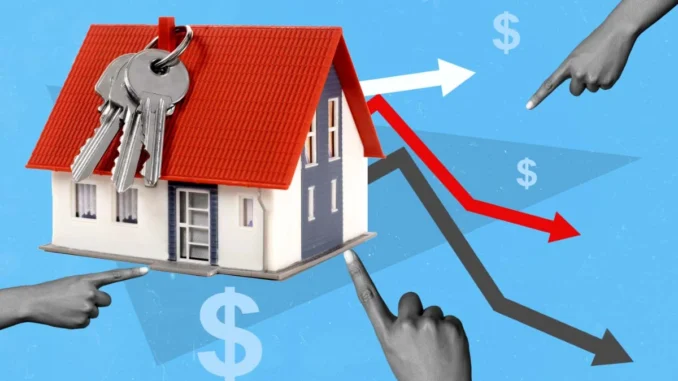
Mortgage rates dropped to 6.78% this week, the biggest weekly decline since mid-March, as investors digested a raft of mixed incoming economic data.
Freddie Mac’s Primary Mortgage Market Survey, which focuses on conventional and conforming loans with a 20% down payment, shows the 30-year fixed rate averaged 6.78% as of July 20, down from last week’s 6.96%. By contrast, the 30-year was at 5.54% a year ago at this time.
“As inflation slows, mortgage rates decreased this week,” said Sam Khater, Freddie Mac’s chief economist in a statement. “Still, the ongoing shortage of previously owned homes for sale has been a detriment to homebuyers looking to take advantage of declining rates. On the other hand, homebuilders have an edge in today’s market, and incoming data shows that homebuilder sentiment continues to rise.”
Homebuilder sentiment rose for the seventh consecutive month and new construction activity slightly pulled back as the cost of materials picked up. Simultaneously, retail sales improved modestly and industrial production declined on waning demand.
Other mortgage rate indexes showed mixed results:
HousingWire’s Mortgage Rates Center showed Optimal Blue’s 30-year fixed rate for conventional loans at 6.74% on Wednesday, compared to 6.85% the previous week. However, the 30-year fixed rate for conventional loans was at 7% at Mortgage News Daily on Thursday, up 13 basis points from the previous week.
After June’s relatively positive inflation data, the market’s attention has turned to the upcoming FOMC meeting.
“Though inflation has slowed, the level remains well above the 2% target and investors expect the Fed to hike interest rates in pursuit of this target,” said Hannah Jones, economist at Realtor.com, in a statement. “While the Federal Funds rate does not directly impact mortgage rates, it installs a floor beneath the cost of borrowing, meaning mortgage rates are likely to remain elevated for the time being.”
George Ratiu, chief economist at Keeping Current Matters, on the other hand, stressed that the spread between the 30-year fixed-rate mortgage and the 10-year Treasury remains north of 300 basis points. To Ratiu, it is a clear signal that investors are still pricing a premium for the higher macro risk.
This ongoing uncertainty permeating financial markets has a direct impact on mortgage rates.
As expected from the traditional vacation season, consumers are more focused on services and travel experiences this summer rather than buying products, added Ratiu.
At today’s rate, the mortgage payment for a median-priced home is about $2,300, a 13% premium compared to last year’s peak-price period. Ironically, the elevated mortgage rates are not making a dent on home prices, which remain high because of a depleted inventory. Hence, the lower mortgage rates bring little relief to hopeful homebuyers.
“Many home owners feel ‘locked-in’ by their current mortgage rate and are therefore choosing to hold off on listing their home for sale,” said Realtor.com’s Jones. “As a result, after more than a year of new listings lagging behind the previous year’s pace, the number of homes for sale has tracked lower than last year’s levels for the past four weeks. In light of limited home inventory, buyers are turning to new construction and builders are picking up the pace of construction to fill the gap.”
Economists largely agreed that current market dynamics are likely to persist until affordability and inventory gains are made.



